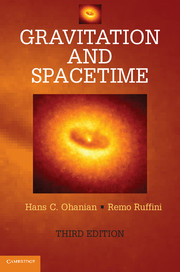Book contents
- Frontmatter
- Contents
- Preface
- Constants
- Notation
- 1 Newton's gravitational theory
- 2 The formalism of special relativity
- 3 The linear approximation
- 4 Applications of the linear approximation
- 5 Gravitational waves
- 6 Riemannian geometry
- 7 Einstein's gravitational theory
- 8 Black holes and gravitational collapse
- 9 Cosmology
- 10 The early universe
- Appendix Variational principle and energy-momentum tensor
- Answers to even-numbered problems
- Index
- References
4 - Applications of the linear approximation
Published online by Cambridge University Press: 05 April 2013
- Frontmatter
- Contents
- Preface
- Constants
- Notation
- 1 Newton's gravitational theory
- 2 The formalism of special relativity
- 3 The linear approximation
- 4 Applications of the linear approximation
- 5 Gravitational waves
- 6 Riemannian geometry
- 7 Einstein's gravitational theory
- 8 Black holes and gravitational collapse
- 9 Cosmology
- 10 The early universe
- Appendix Variational principle and energy-momentum tensor
- Answers to even-numbered problems
- Index
- References
Summary
Twinkle, Twinkle, Little Star
How I Wonder Where You Are.
“1.75 seconds of arc from where I seem to be
For ds2 = (1 − 2G M/r )dx2 − (1 + 2G M/r )(dx2 + dy2 + dz2).”
Source unknownIn this chapter we will obtain some simple time-independent solutions of the linear field equations, such as the solution for the field produced by a static spherical mass and by a steadily rotating mass. For a given solution of the field equations, the equation of motion then permits us to predict the trajectories of particles or of light signals, which we can compare with experimental or observational data.
Most of the experimental or observational tests that have so far been performed on the relativistic theory of gravitation involve only the linear approximation. For instance, the gravitational time dilation predicted by the linear approximation has been tested and confirmed by experiments with clocks in the gravitational field of the Earth. Some other tests exploit the motion of light signals in the gravitational field of the Sun. Since light signals are necessarily relativistic, their motion provides a direct test of the relativistic features of our equations.
- Type
- Chapter
- Information
- Gravitation and Spacetime , pp. 127 - 181Publisher: Cambridge University PressPrint publication year: 2013

